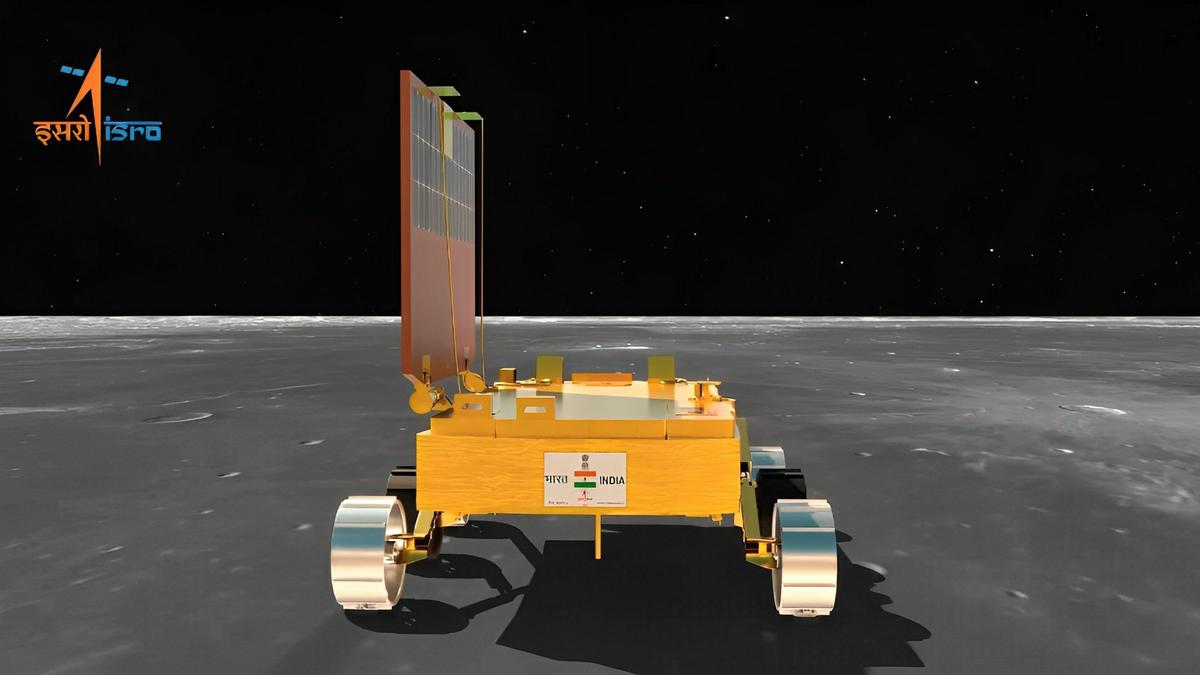
Chandrayaan-3 | Another instrument onboard Pragyan confirms presence of sulphur
The Hindu
ISRO: Pragyan rover's APXS confirms presence of Sulphur in south polar region of Moon. APXS, developed by PRL, Ahmedabad, w/ support from SAC, Ahmedabad & URSC, Bengaluru, is best suited for in-situ analysis of elemental composition of soil & rocks on Moon. Video shows rover's automated hinge mechanism & its search for safe route.
The ISRO on Thursday said that another instrument onboard the Chandrayaan-3 rover Pragyan has confirmed the presence of Sulphur (S) in the south polar region. On August 28, the Laser-Induced Breakdown Spectroscopy (LIBS) instrument onboard Pragyan confirmed the presence of sulphur in the region unambiguously. Now the Alpha Particle X-ray Spectroscope (APXS) instrument has also confirmed the presence of sulphur.
“Another instrument onboard the Rover confirms the presence of Sulphur (S) in the region, through another technique. The Alpha Particle X-ray Spectroscope (APXS) has detected S, as well as other minor elements. This finding by Ch-3 compels scientists to develop fresh explanations for the source of Sulphur (S) in the area: intrinsic?, volcanic?, meteoritic?,......?.” ISRO posted on X (formerly Twitter).
ISRO said that the APXS instrument is best suited for in-situ analysis of the elemental composition of soil and rocks on the surface of planetary bodies having little atmosphere, such as the Moon.
It carries radioactive sources that emit alpha particles and X-rays onto the surface sample. The atoms present in the sample in turn emit characteristic X-ray lines corresponding to the elements present. By measuring the energies and intensities of these characteristic X-rays, researchers can find the elements present and their abundances.
“APXS observations have discovered the presence of interesting minor elements, including sulphur, apart from the major expected elements such as aluminium, silicon, calcium and iron. It may be recalled that the LIBS instrument onboard the Rover also confirmed the presence of sulphur. Detailed scientific analysis of these observations are in progress,” the space agency said.
APXS is developed by the Physical Research Laboratory (PRL), Ahmedabad, with support from the Space Application Centre (SAC) Ahmedabad, whereas the U.R. Rao Satellite Centre (URSC), Bengaluru, built the deployment mechanism.
The ISRO said that Pragyan, with its scientific instruments, is trying to find answers to questions like “What are lunar soil and rocks made of in the south polar region and how’s it different from other highland regions?”













